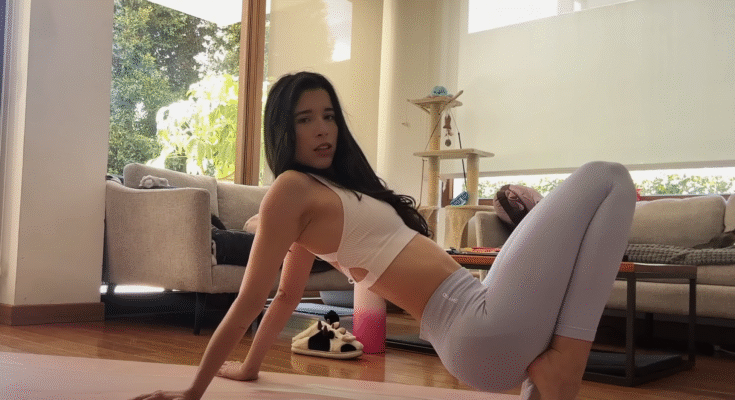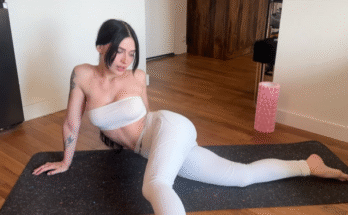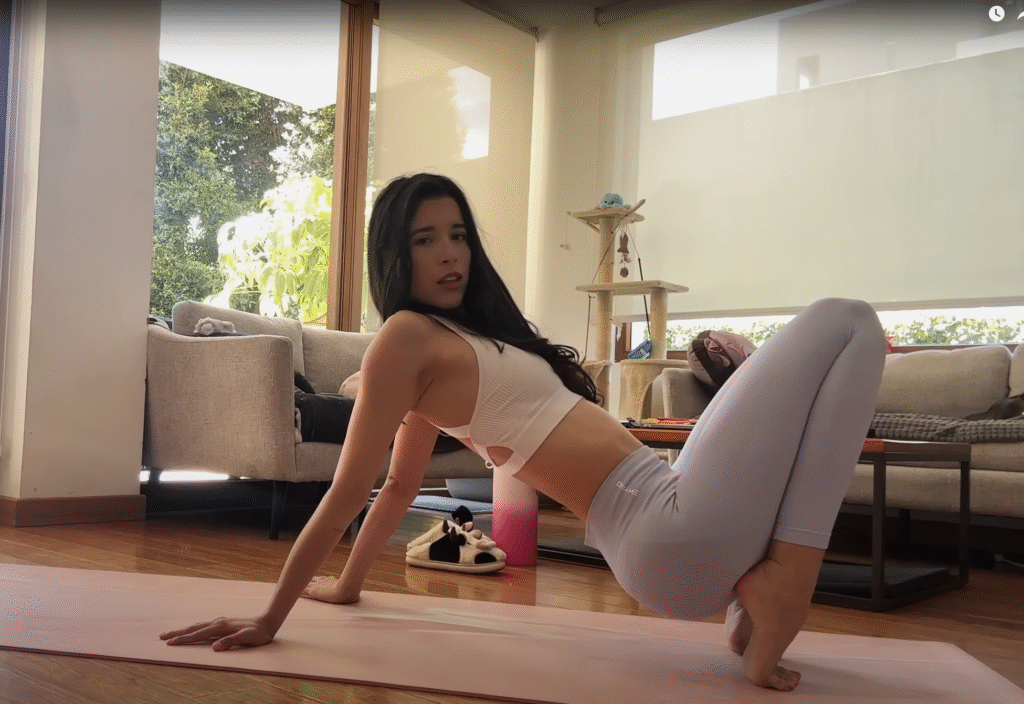
In our fast-paced world, where tension builds up in both body and mind, Deep Stretch Yoga offers a sanctuary of release and renewal. This practice is not about sweating or pushing limits—it’s about surrender, patience, and profound restoration. Every stretch becomes a journey inward, allowing the body to lengthen, the breath to deepen, and the mind to find stillness. Whether you’re an athlete seeking recovery, an office worker fighting stiffness, or simply someone craving calm, Deep Stretch Yoga invites you to slow down, listen, and open from within.
What Is Deep Stretch Yoga?
Deep Stretch Yoga, often known as Yin Yoga or Restorative Stretching, focuses on holding postures for longer periods—usually between two and five minutes. Unlike dynamic forms such as Vinyasa or Power Yoga, which target the muscles, Deep Stretch works into the fascia, the connective tissue that surrounds muscles, joints, and organs.
By gently stressing these tissues, circulation improves, mobility increases, and the body learns to relax at a deeper level. The goal isn’t to reach the deepest point of a stretch but to soften into the pose, using gravity and breath to guide you further. Over time, this practice not only releases physical tension but also dissolves mental and emotional stress that accumulates in the body.
Preparing for Your Practice
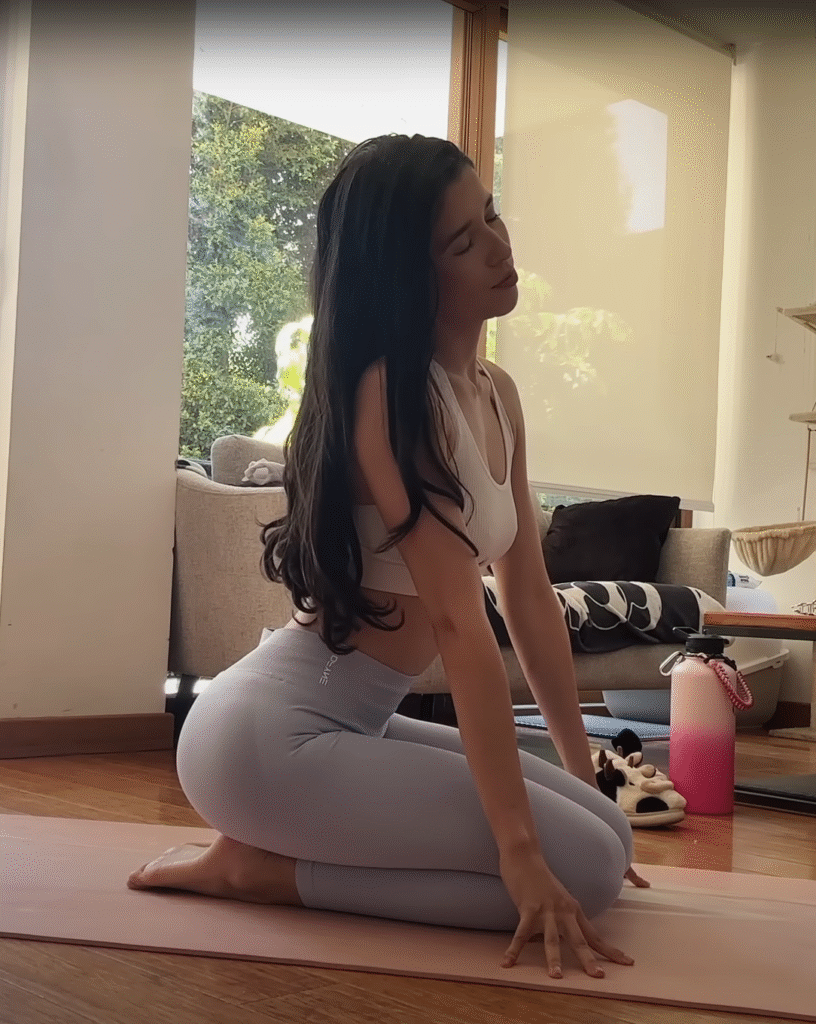
To experience the full benefits of Deep Stretch Yoga, it’s important to create an environment that supports relaxation and focus. Choose a quiet space where you won’t be disturbed. Dim the lights, silence your phone, and roll out your yoga mat. Gather a few props—a bolster, pillow, yoga block, or blanket—to support your body during longer holds.
Wear comfortable clothing that allows free movement and warmth, since your body temperature may drop as you relax. Soft instrumental music or nature sounds can enhance the peaceful atmosphere. Before starting, take a few moments to center yourself with slow breathing, letting go of the day’s distractions.
Centering with the Breath
Begin your session in a comfortable seated or reclining position. Close your eyes and focus on your breath. Inhale deeply through your nose, expanding your belly and ribs. Exhale slowly through your mouth, feeling the weight of your body sink into the mat.
Spend two to three minutes breathing this way. Each breath should feel slower, fuller, and more intentional. Your breath is your anchor—it keeps you present and helps you navigate any discomfort or tightness that arises during stretching.
The Deep Stretch Yoga Sequence
The following sequence targets major muscle groups and areas that commonly hold tension: the hips, hamstrings, spine, shoulders, and chest. Move slowly between poses, using props as needed. Remember—Deep Stretch is not about force. It’s about softening and surrender.
1. Butterfly Pose (Baddha Konasana)
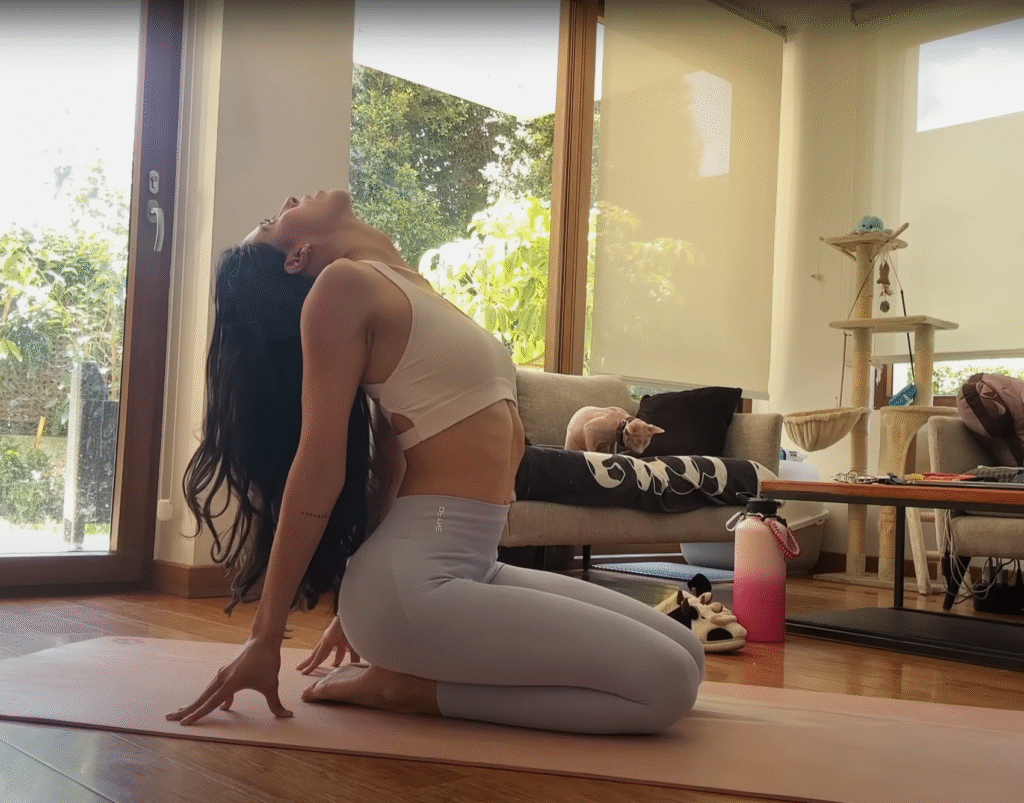
Sit with the soles of your feet together and your knees dropping out to the sides. Bring your heels closer or farther away from your body depending on your comfort. Fold forward gently, letting your head and shoulders relax.
Stay here for 3–5 minutes, breathing slowly. Feel the stretch in your inner thighs and lower back. With each exhale, allow gravity to draw you deeper into stillness.
2. Half Dragon Pose (Low Lunge Stretch)
From a kneeling position, step your right foot forward into a lunge. Keep your back knee on the mat and gently press your hips forward. You can rest your hands on blocks or the floor for support.
This pose deeply stretches the hip flexors and quadriceps. Stay for 2–4 minutes on each side. Focus on releasing the muscles rather than pushing them.
3. Seated Forward Fold (Paschimottanasana)
Sit with both legs extended straight in front of you. Inhale to lengthen your spine, then exhale as you fold forward, reaching for your shins, ankles, or feet. Keep your knees slightly bent if necessary.
Stay here for 3–5 minutes. You’ll feel a deep stretch along your hamstrings, calves, and back. Allow your head and neck to completely relax, melting tension away.
4. Pigeon Pose (Eka Pada Rajakapotasana)
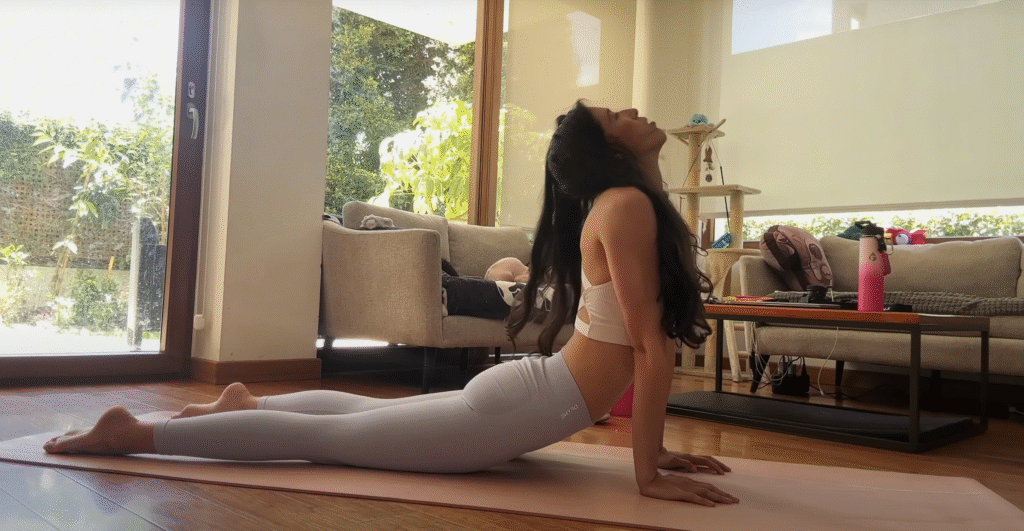
From a tabletop position, bring your right knee forward and place it behind your right wrist. Extend your left leg straight back. Keep your hips square and fold forward, resting your forehead on the mat or a block.
Hold for 3–5 minutes per side. This powerful hip-opener releases tension stored in the glutes and lower back—areas that often hold emotional stress.
5. Reclined Twist (Supta Matsyendrasana)
Lie on your back, draw your right knee into your chest, and then drop it across your body to the left. Extend your right arm out to the side and gaze toward your right fingertips.
Stay here for 2–3 minutes on each side. This pose gently stretches the spine and aids digestion while calming the nervous system.
6. Supported Bridge Pose (Setu Bandhasana)
Lie on your back, bend your knees, and place your feet hip-width apart. Lift your hips slightly and slide a yoga block or bolster under your sacrum. Let your body rest on the support.
Hold for 3–5 minutes, allowing your chest to open and your breath to deepen. This gentle inversion restores circulation and releases lower back tension.
7. Legs Up the Wall (Viparita Karani)
Sit close to a wall, lie back, and extend your legs upward so they rest against it. Your arms can relax beside your body, palms facing up.
Stay for 5–10 minutes. This posture reduces swelling in the legs, promotes lymphatic drainage, and deeply relaxes the body.
8. Final Relaxation – Savasana
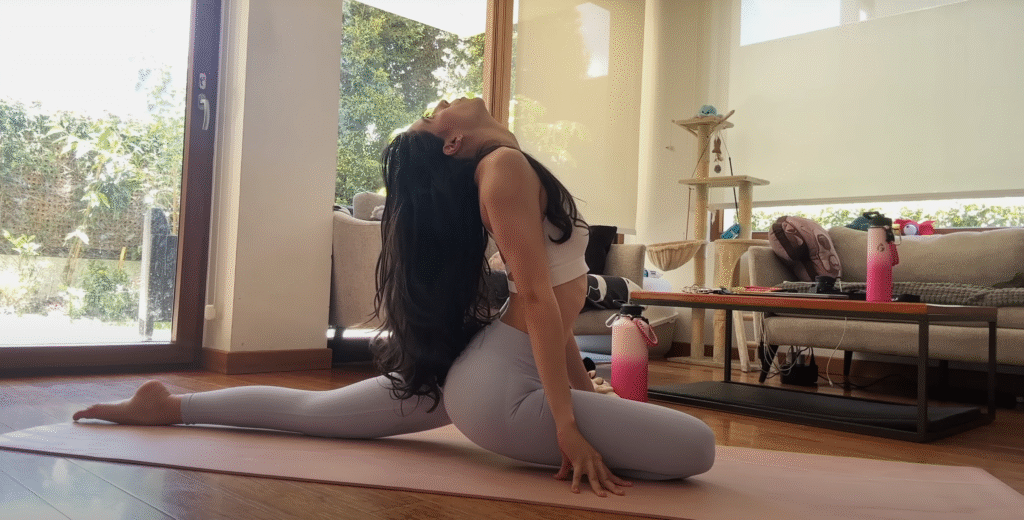
Finish your practice lying flat on your back with your legs extended and arms by your sides. Close your eyes and let your breath return to a natural rhythm. Feel the energy flowing smoothly through your body.
Remain here for 5–10 minutes, soaking in the calm and spaciousness that Deep Stretch Yoga creates.
The Power of Stillness
Holding poses for several minutes may challenge your patience at first. The mind might wander or resist the stillness. But this is where transformation happens. Deep Stretch Yoga teaches you to be present with discomfort, to breathe through resistance, and to find peace in the pauses.
Stillness reveals subtle sensations—the warmth spreading through muscles, the rhythm of your heartbeat, the gentle expansion of breath. As you surrender, your body softens, and the mind follows. Each pose becomes a form of meditation, a space to reconnect with yourself beyond the noise of daily life.
Physical and Mental Benefits
Practicing Deep Stretch Yoga regularly can have profound effects on both body and mind:
- Improved flexibility: Long-held stretches gently lengthen the fascia, increasing mobility in muscles and joints.
- Reduced tension: Deep breathing and relaxation release chronic tightness in the hips, back, shoulders, and neck.
- Enhanced circulation: Holding poses allows fresh blood and oxygen to flow into tissues, promoting healing and recovery.
- Stress relief: Slow movements activate the parasympathetic nervous system, lowering stress and promoting emotional balance.
- Better sleep: The calming nature of this practice helps ease insomnia and supports deeper rest.
- Mindfulness and awareness: Extended holds create space for introspection and inner clarity.
Tips for a Successful Practice
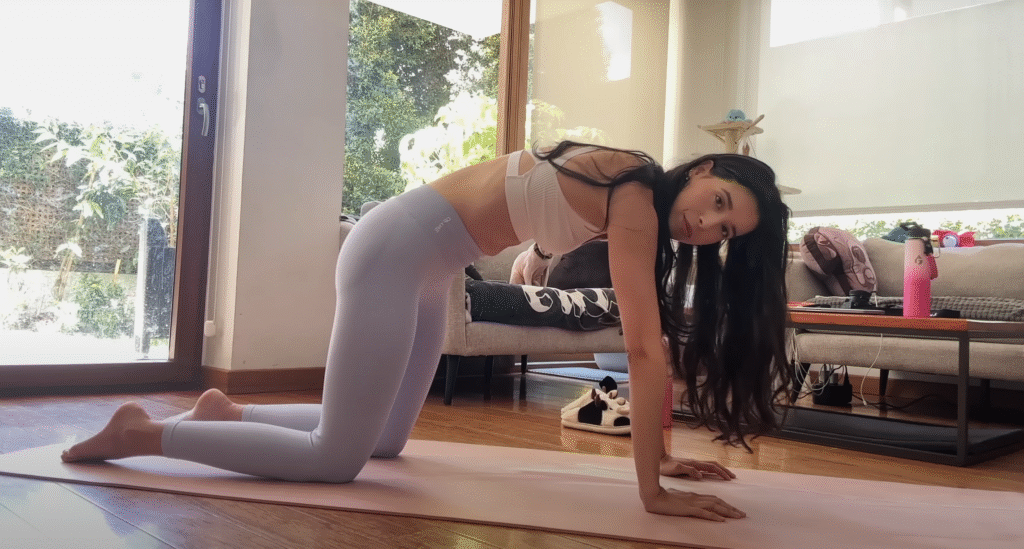
- Listen to your body. Never force yourself into discomfort. The stretch should feel intense but not painful.
- Use props generously. Support your joints and muscles to fully relax.
- Stay consistent. Even 20 minutes a few times a week can bring visible changes.
- Embrace patience. Flexibility grows over time. Enjoy the process rather than rushing progress.
- End with gratitude. After your session, take a moment to thank your body for its strength and openness.
Deep Stretch Yoga as a Way of Life
Beyond the mat, the lessons of Deep Stretch Yoga extend into daily living. It teaches patience in moments of frustration, calm in chaos, and gentleness toward oneself. It reminds us that true flexibility isn’t just physical—it’s mental and emotional, too.
Each session becomes a reminder that growth often happens in stillness, not struggle. By surrendering and breathing deeply, you learn to trust your body’s wisdom and embrace the present moment.
In the quiet of Deep Stretch Yoga, healing begins. Muscles lengthen, the heart softens, and the mind clears. It’s not merely an exercise—it’s an act of self-love, a return to balance, and a gentle whisper to your soul that says: You are safe, you are whole, you are home. 🧘♀️🌿
